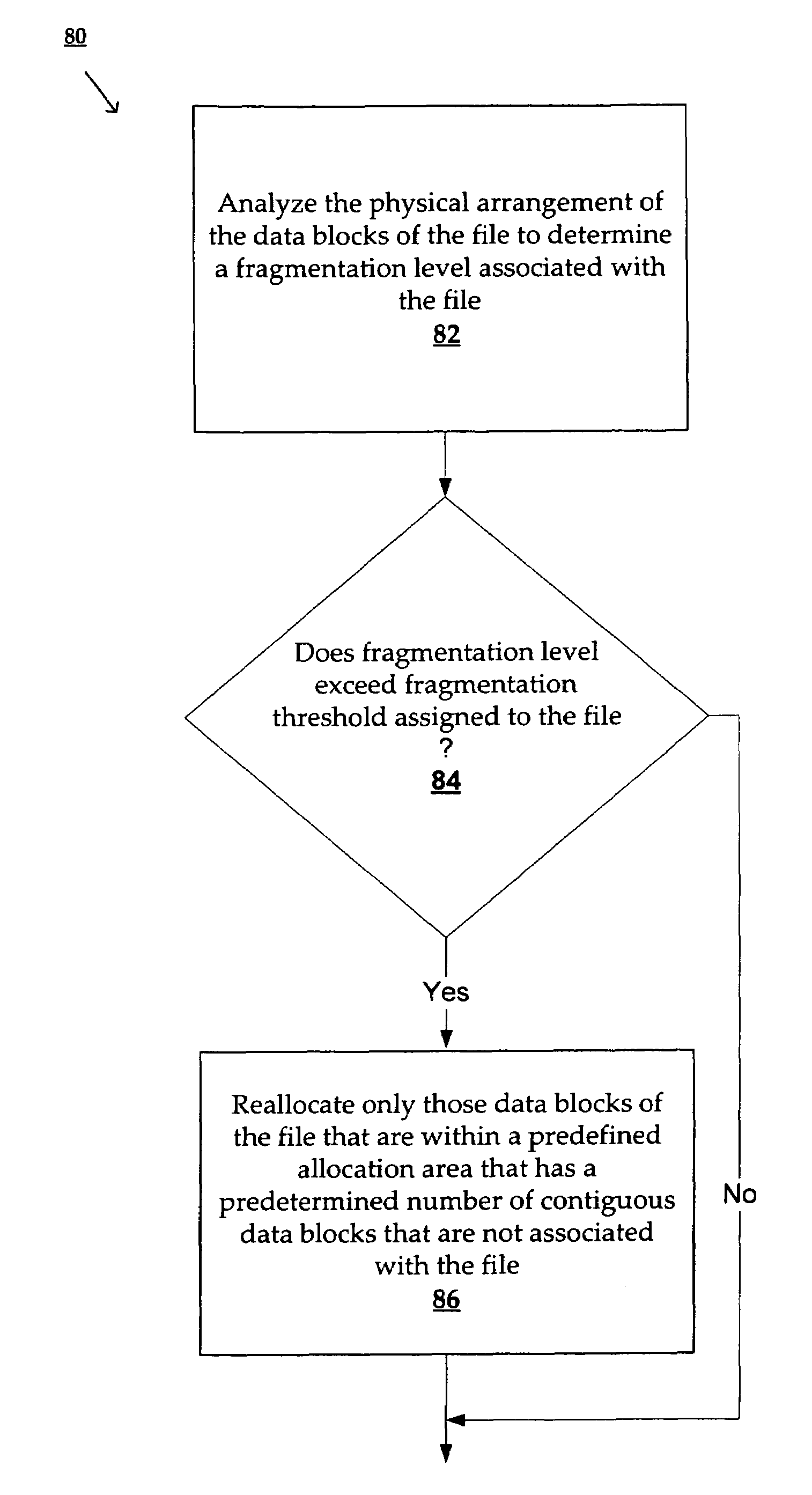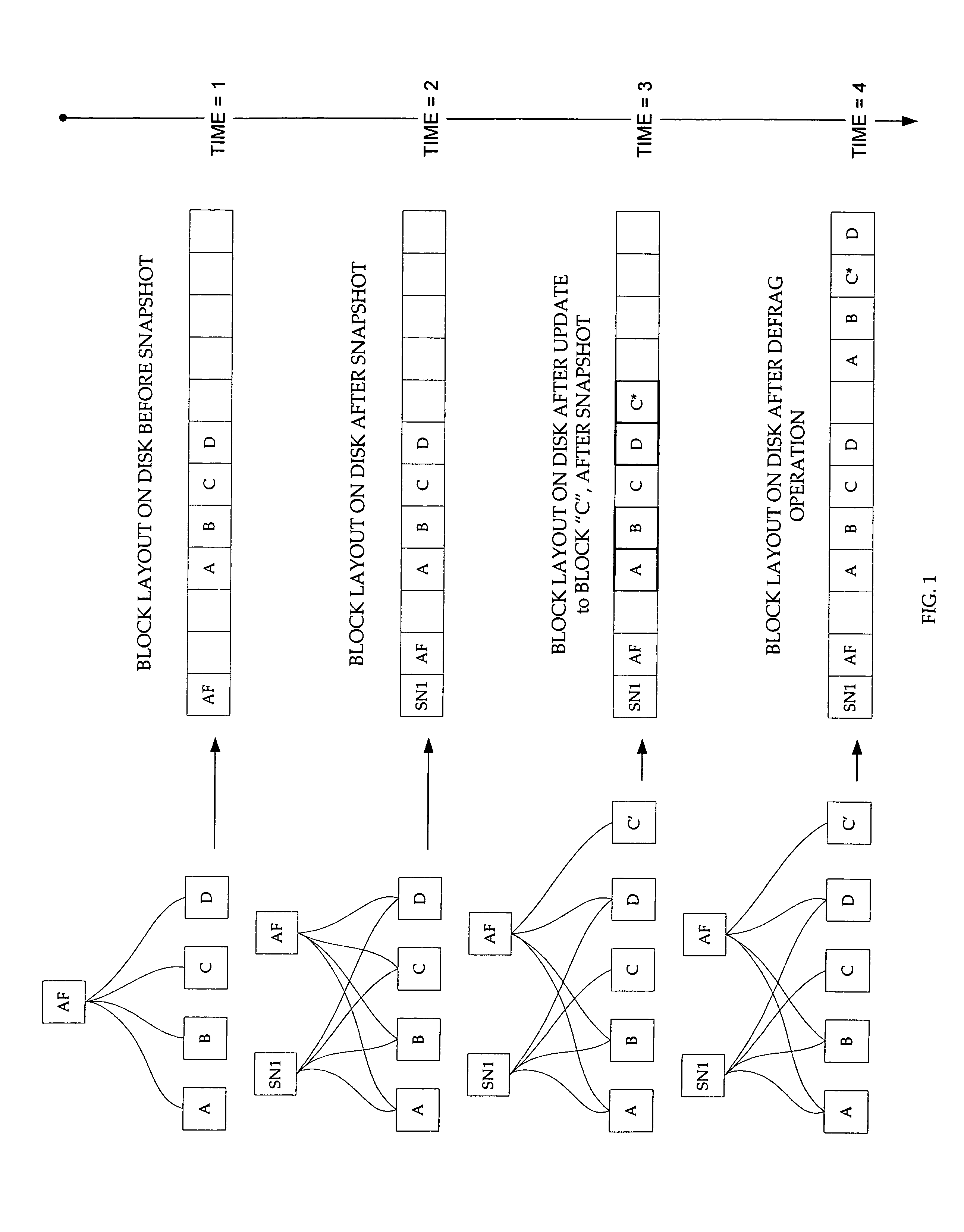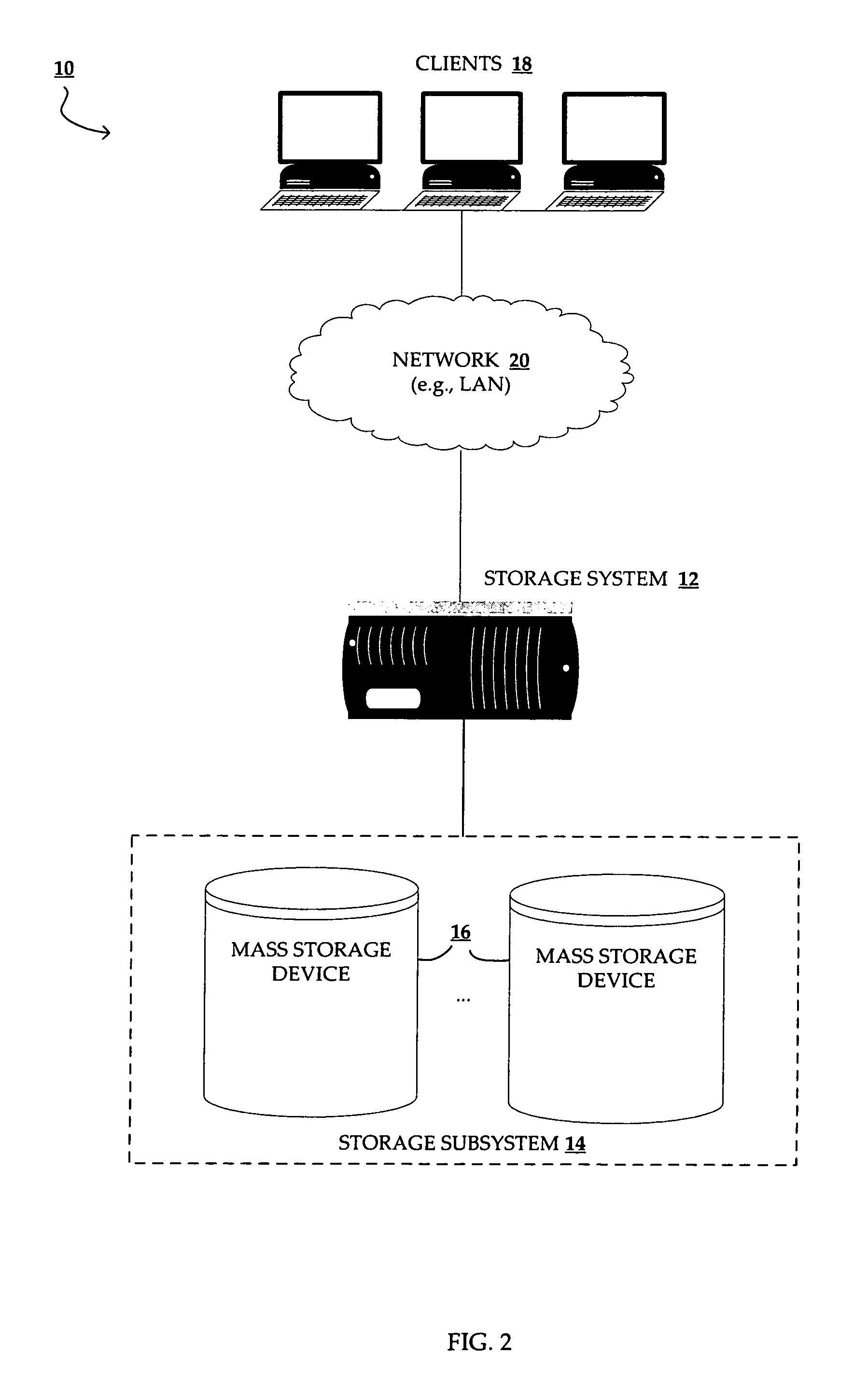Method and system for reallocating data in a file system
a file system and data technology, applied in the field of network-based storage systems, can solve the problems of limiting the number of read operations required, limiting the seek time required by the reading component, and limiting the availability of physical contiguous space for writing new files
- Summary
- Abstract
- Description
- Claims
- Application Information
AI Technical Summary
Problems solved by technology
Method used
Image
Examples
Embodiment Construction
[0024]A method and system for reallocating the data blocks of a logical data entity are described. In the following description, for purposes of explanation, numerous specific details are set forth in order to provide a thorough understanding of the present invention. It will be evident, however, to one skilled in the art that the present invention may be practiced without these specific details.
[0025]As described in greater detail below, in certain embodiments of the invention, a reallocation method includes analyzing the physical arrangement of the data blocks making up a particular logical data entity (e.g., a file, volume or logical unit number (LUN)) to determine a fragmentation level associated with the logical data entity. If the fragmentation level exceeds a fragmentation threshold that has previously been assigned to the logical data entity, then an attempt is made to physically rearrange the data blocks in order to reduce the overall level of fragmentation. Accordingly, at...
PUM
 Login to View More
Login to View More Abstract
Description
Claims
Application Information
 Login to View More
Login to View More - R&D
- Intellectual Property
- Life Sciences
- Materials
- Tech Scout
- Unparalleled Data Quality
- Higher Quality Content
- 60% Fewer Hallucinations
Browse by: Latest US Patents, China's latest patents, Technical Efficacy Thesaurus, Application Domain, Technology Topic, Popular Technical Reports.
© 2025 PatSnap. All rights reserved.Legal|Privacy policy|Modern Slavery Act Transparency Statement|Sitemap|About US| Contact US: help@patsnap.com



